

Anne Britt Ylvisåker
Arlyne Moi
In this article, Anne Britt Ylvisåker writes about the craft artists Marit Tingleff, Kari Dyrdal and Torbjørn Kvasbø and their strong connection and impact on the development of the craft education in Bergen, Norway.
Kari Dyrdal (b. 1952), Marit Tingleff (b. 1954) and Torbjørn Kvasbø (b. 1953). Today three well-established artists at the top of their careers. For decades they have distinguished themselves at home and abroad through their divergent artistic practices. But it started in Bergen in the mid-1970s, when all three began studying at Bergen Kunsthåndverksskole (BKHS, Bergen School of Arts and Crafts)1 and were thrown into what would prove to be the greatest period of rupture in craft-based art in the twentieth century here in Norway. All three would end up as professors in their respective fields. What did the three encounter in Bergen, and how has it affected their later practice? The school in Bergen will be the starting point for this article, as well as the centrepiece around which it is organised.
Why Bergen?
While Marit Tingleff had already decided at the age of nine that she would become a ceramic artist,2 the choice of occupation was more vague for both Kari Dyrdal and Torbjørn Kvasbø. Kari excelled at school. Early on she ‘cracked the code for how to learn’, as she puts it, and it was expected that she would choose an academic path.3 At the same time, she came from a family of (typical) ‘makers’, where to use one’s hands – and, not least, to learn to carry out a work of craft properly – was an important part of the ballast she received from home. Kari had initially planned only to take a one-year course in weaving, as a gap year, at a school for home craft, but the experience caused her to change her mind entirely: in weaving she found a combination of handicraft, mathematics and systematics that strongly appealed to her need for structure and order. Here she wanted to stay – here she felt at home.4 When Kari applied to BKHS the following year, she was not accepted. Yet another year of weaving followed, now as an apprentice in the well-reputed weaving studio of Elise Jakhelln (1909–2002). Jakhelln had run her own studio since 1935, delivering textile furnishings to large public buildings, as well as upholstery fabric to the best furniture companies in Norway, and she was well-established in the applied art movement that still dominated the professional craft milieu in Norway.5 Her weaving studio employed a few permanent weavers and two apprentices who had fixed duties and a strict frame in which to work. For Kari, this was a fantastic year, and when she applied again to Norway’s two schools for art and craft, in Oslo and Bergen, she was accepted at both. Having grown up in Oslo, Kari chose BKHS in Bergen. She did not make a qualified decision based on knowledge of the schools’ ideologies. She just wanted to move away from Oslo and experience something new.

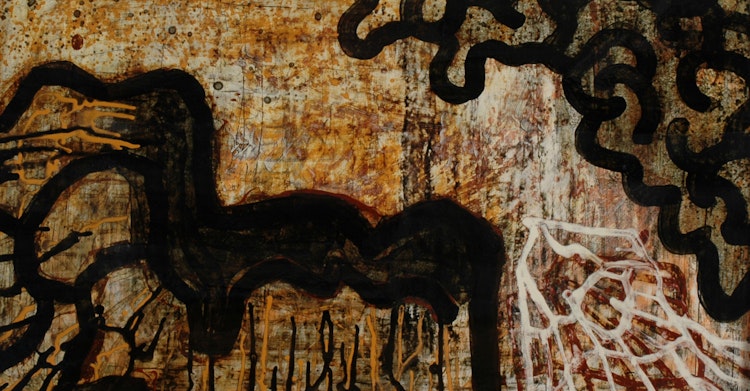
They encountered an educational system that was moving in the opposite direction to what was happening amongst the politically active and deeply involved members of the art scene
Neither did Torbjørn have a clear idea of what awaited him in Bergen. Like Kari, he was also aiming for a different career. After experiencing student life in Oslo and then teaching for a year in his home village, he applied to Oslo’s music conservatory. He wanted to be a pianist, but his application was rejected. However, the desire to move away from home remained strong, and after a tip-off from a classmate, he applied to the study programme ‘art’ at Røros’s vocational school. The programme included courses in wood, metal and ceramics. Torbjørn was thus able to explore several artistic disciplines, but over time focused increasingly on ceramics. He and the other students had access to the school’s workshops in the evenings and on weekends, at the same time as arrangements were made so that Torbjørn could practice the piano and prepare for re-applying to the conservatory the following year. The year at vocational school was actually only intended as a break from his devotion to the piano, but this was not what it turned out to be. There was little music and a lot of ceramics, and the following year he applied instead to the schools for art and craft in Bergen and Oslo.6
Torbjørn was accepted ‘by a hair’s breadth’ at BKHS in the autumn of 1975, as the first name on the reserve list, just as Marit had been the year before. But her introduction to craft art was different. Marit did not like theoretical subjects, so unlike the other two, chose a practical educational trajectory after completing intermediate-level schooling. She first worked as an apprentice with Hanna von der Lippe (b. 1941) for a year, then spent some months apprenticing with Vegard Fusche Hansen (b. 1947) in Kongsberg. It was here she encountered the material that would become decisive for her later specialization: both von der Lippe and Fusche Hansen worked with earthenware and slips. Both had attended Oslo’s school for art and craft in the 1960s and studied under Jens von der Lippe (1911–1990);7 he was a powerful spokesman for slip decorated earthenware, which he considered the only type of ceramic material Norwegians would ‘be able to master to some extent.8
In contrast to Kari and Torbjørn, Marit only applied to BKHS in Bergen.9 But like the other two, she wanted most of all to move away from home. Oslo seemed a bit too urban, unattainable and distant, but Bergen was far away, suitably large, and seemed less ‘dangerous’ than Norway’s capital, as seen from a rural perspective. Furthermore, her brother Øyvind was already studying at the school in Bergen. Marit’s application was rejected at first, but she still went to Bergen to scout the terrain for alternatives. She had heard of another possible apprenticeship, this time with the ceramic artists Odd (1923–2014) and Kari (b. 1925) Gjerstad on the island of Sotra near Bergen. But Marit was accepted by BKHS after all: since the rector was unsure of whether one particular student who had been offered a place would actually complete the school year, the ceramics institute accepted an extra student that year, and Marit was the on her way.
Norway’s two schools for art and craft had been established with the aim of refining the aesthetic sensibility of those working with crafts, that is, to ‘contribute to the enculturation of craftsmen
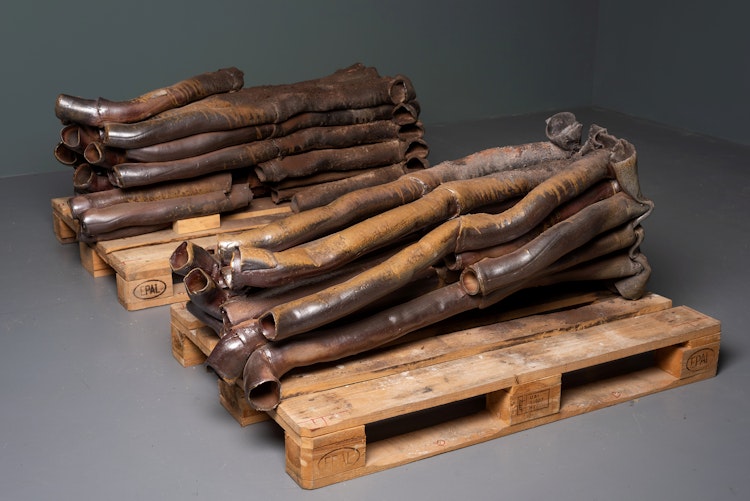
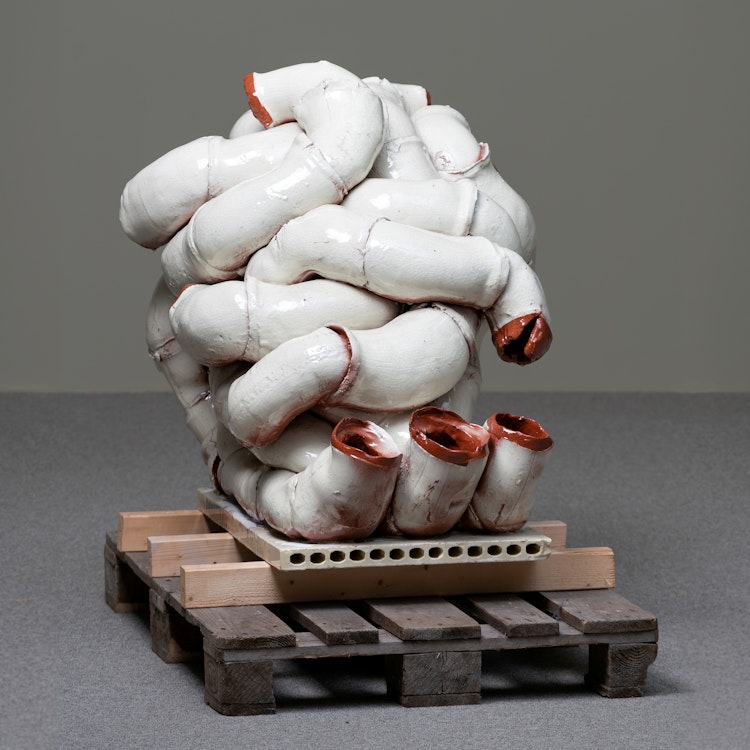
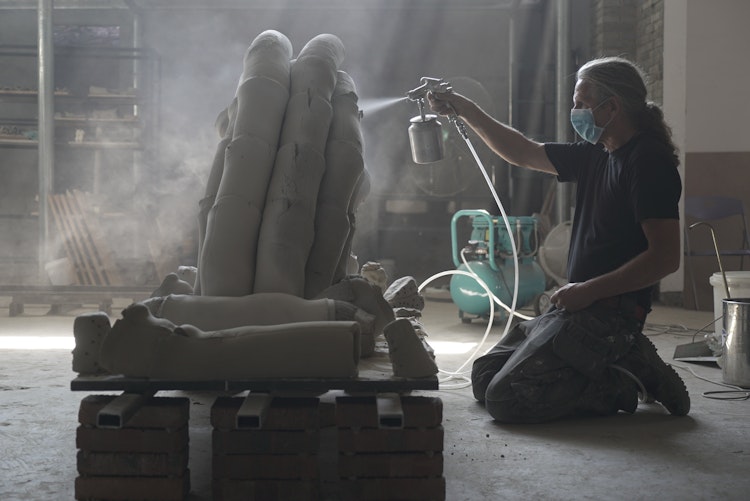
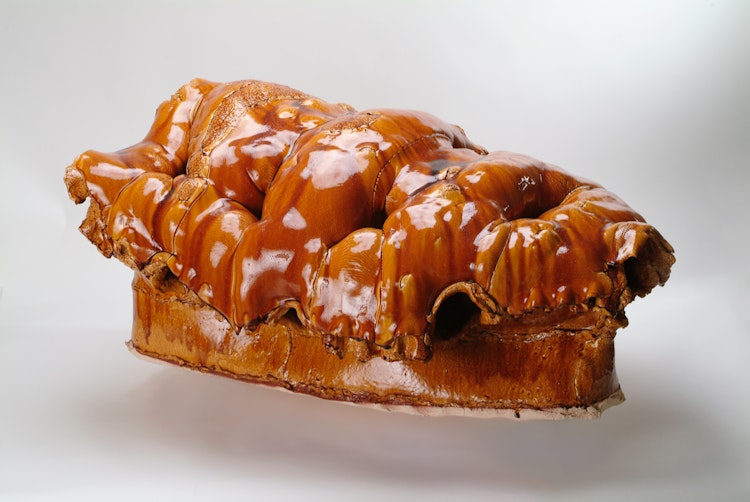
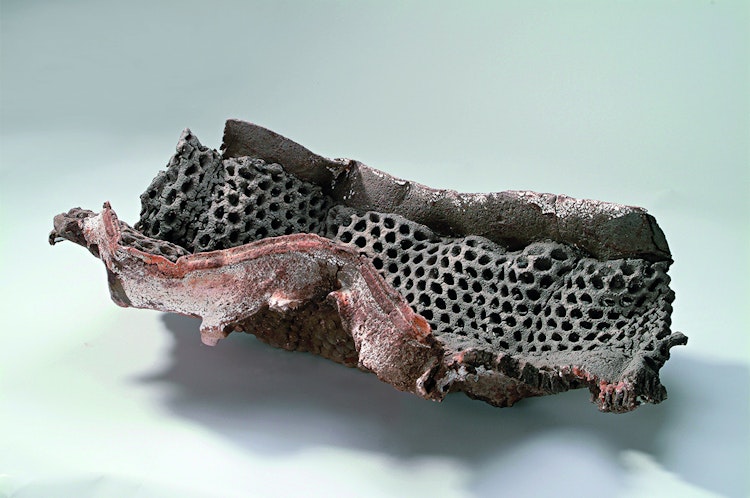
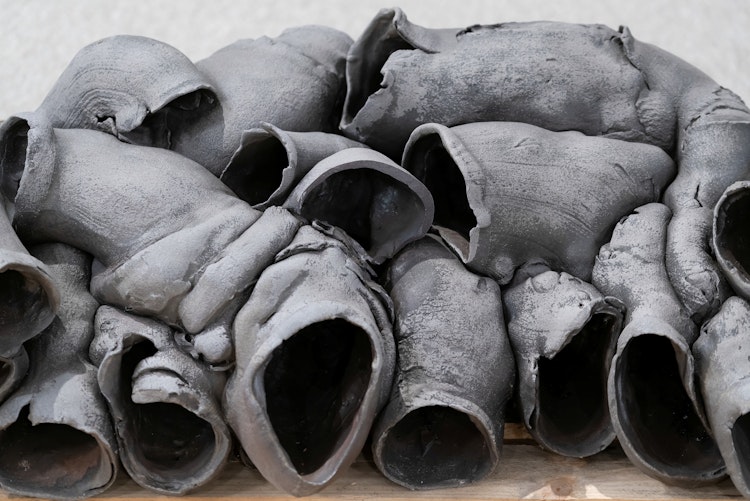
A school out of step
Kari Dyrdal, Marit Tingleff and Torbjørn Kvasbø. Three young, enthusiastic and knowledge-hungry students came to BKHS in the mid-1970s and encountered an educational system that in many respects was moving in the opposite direction to what was happening amongst the politically active and deeply involved members of the art scene both in and outside the school. The art scene was ‘boiling’, as it were, and the three budding artists responded in different ways to what they encountered there.
Marit was perhaps the one who was best prepared for events at the time, and she relates that while apprenticing with von der Lippe and Fusche Hansen, she had been ‘well-indoctrinated’ in Norwegian cultural policy.10 Both of these established artists went to Oslo at regular intervals, as they were involved in political issues related to their field. Furthermore, the same year that Marit and Kari enrolled in BKHS, Kunstnaraksjonen 1974 (Artist Action) started: after a survey on artists’ living conditions exposed a sorry state of affairs, many small artist organizations came together in a mutual cause to petition the state.11 The goal was to improve the financial and social situation for artists.
For artists who worked with crafts, reaching this goal also entailed breaking out of what they perceived as the authoritarian Landsforeningen norsk brukskunst (LNB, National Federation of Norwegian Applied Arts), which had, since the early 1900s, had the power to define and dominate developments in the crafts. LNB was an umbrella organisation for the crafts, architecture, interior design and other types of design, and also in its ranks were theorists and other interested parties such as schools, museums, the Norwegian housewives’ association and industrial manufacturers.12 Up until the 1970s, the LNB had enjoyed harmony amongst its ranks, but now it suffered internal polarisation and rupture between the professions it represented.13 Several professional fields broke away from the organisation, and the artists working with crafts were soon amongst them. Norske Kunsthåndverkere (NK, the Norwegian Association for Arts and Crafts) was established in 1975 as an organisation devoted to the interests of artists working with crafts.14 The craft artists wanted to pursue their specialised fields without interference from others, yet based on the same conditions as other artists had – not on the conditions of companies that mass-produced furniture, glass, porcelain and so forth. Another aim was to take control of the mediation of their art: to decide for themselves what should be exhibited where, to avoid selling through shops for applied art and instead set up artist-run galleries and sell works directly from their own workshops/studios. In other words, the artists who worked with crafts wanted to decide for themselves what and who should define their field and how these aims could best be achieved. In NK’s start-up phase, a central concern was to emphasize the new, that which specifically characterized the field of contemporary craft and distinguished it from the bordering fields within applied art – particularly industrial production. It was a matter of re-orientation and marking distance from the immediately preceding situation.
In the midst of the most intense battle for hegemony over the craft professions in 1974, Marit and Kari began studying at BKHS, with Torbjørn following on their heels a year later. But while the disciplinary friction and new orientation were highly relevant themes amongst the students and in the milieu of professional artists outside the school, the teaching they received was geared towards a completely different reality. The courses on offer and the new developments in the fields of craft were incompatible. Norway’s two schools for art and craft were still bastions of applied art and would continue for a long time to promote the ideology of the applied art movement – the same ideology from which the craft artists were now valiantly trying to emancipate themselves.
Norway’s two schools for art and craft had been established in the early 1900s with the aim of refining the aesthetic sensibility of those working with crafts, that is, to ‘contribute to the enculturation of craftsmen’.15 Classical teaching methods including form theory and drawing were therefore the main foci. Matriculating students were already supposed to know their handicraft. It was not until Runar Børresen (1912–1983) became rector of BKHS in 1955 that the school became a fully-developed school for applied art, with a three-year education, a larger professional staff and workshops for each discipline. Børresen considered workshop experience fundamental, and he was an enthusiastic spokesman for the so-called ‘practical-aesthetic’ principle whereby students should have the possibility to test out what they had drawn on paper.16 It was also Børresen who implemented three-year study programmes in textiles (1955) and ceramics (1957); the two new departments gained their own workshop facilities in connection with the move to a new school building in 1964.17
It was thus quite a ‘new’ school the three students came to in the mid-1970s, with ten-year-old and barely completed workshop facilities. But the ideology was old: although Børresen also wanted to welcome craft artists, his own project was primarily to build up a school that could fulfil small regional businesses’ need for assistants, and, not least, to ‘educate draftsmen and designers whom the manufacturing industries could use in future years’.18 The ideal was to link creative artists to rational factory production, and the formal ideal was to design refined, precise and functional products intended for home use – an ideal emanating from the Bauhaus school (1919–1933).
The students were critical of the teaching they were given, and they made demands. Many demands.
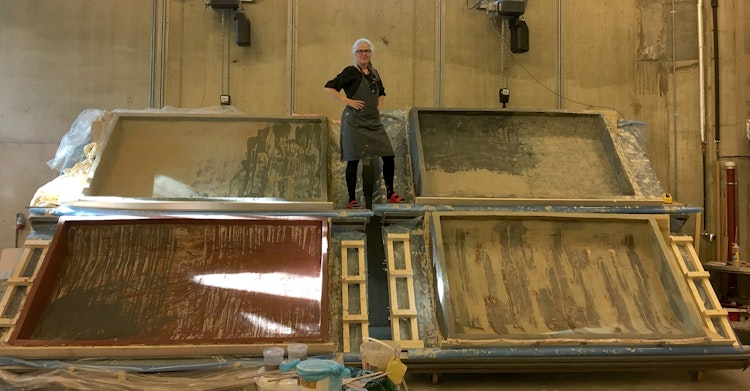
The beginning of a protest
The ceramics students were sceptical, and their scepticism soon developed into a larger conflict. As early as in the mid-1960s, with the politically active Yngvild Fagerheim (b. 1942) at the forefront, the first critical questions were asked about how the school prepared students for professional practice.19
What Rector Børresen, along with the teachers Kåre Mjøs (b. 1920) and Alf Rongved (1924–2016), presented as a both/and education, the students perceived as a neither/nor education; it fell short both with regard to studio production and industrial production. One could say the study programme languished in an ineffective no man’s land. BKHS needed to take responsibility and take a stand: autonomous art or industrially-oriented design!
The students were not actually against industrial production but criticized the leaders for gearing their teaching towards an industry that was almost non-existent. And they had discovered that alternatives existed: on a study trip to the school Konstfack in Stockholm, they were introduced to a different attitude to ceramics: the students in Stockholm were allowed to experiment with materials and firing under completely different conditions than those BKHS offered. Some of BKHS’s students then got hold of A Potter’s Book, by the Englishman Bernhard Leach, which – together with the Dane Finn Lyngaard’s Keramisk håndbog – opened a completely new world for them, one presenting ceramics as far more than precise, functional form in manganese-coloured chamotte clay. The books gave a clear introduction to how to expand the artistic scope.20 When the ceramic artist Odd Gjerstad appealed to the school for help in creating a large commission, the students also saw first-hand that it was possible to live uncompromisingly in agreement with clay, without needing to consider applied art’s narrow ideals for form and function. The life that Odd and Kari Gjerstad lived beyond the city’s outskirts would become an ideal for a whole generation – including Marit and Torbjørn.21 ‘The clay must be taught. One must make demands on the material, keep it under strict control and try to master it.’ This was the attitude that Rongved, the head of the ceramics department, tried to inculcate into his students.22 The Gjerstads had a humbler message: ‘It is the clay we want to bring forth. We must ask the clay what it wants us to do.’23
And just beyond the school’s threshold much was happening. Among other things, in the premises of the art society Bergen kunstforening, the artist group Gruppe 66 made members of the city’s art establishment choke on their coffee through an experimental and boundary-breaking exhibition marked by agitation, actions and happenings.24 The exhibition confronted what the participants perceived as authoritarian censorship and the conservative and provincial environment in Bergen. They wanted to tear down the boundary between art and life, challenge the understanding of what art could be, and they worked in interdisciplinary ways. Group 66 brought the international student protests to Bergen.25 Olav Herman Hansen, one of the initiators, summarised the situation:
"The young people wanted to find their identity, [they were] tired of their parents’ attitudes and moral concepts. Economic exploitation and suppression, the Vietnam War and conflicts in South America. Nuclear armament and pollution, women’s liberation. These issues formed part of the background for the enthusiasm that brought large groups of young people together in the belief that a better and more just world was possible."26
BKHS’s students wanted art to make a difference in society, and they wanted a kind of teaching that treated the project of finding one’s own artistic expression in dialogue with materials as more important than the rational production of beautiful products for everyday use. They were critical of the teaching they were given, and they made demands. Many demands. And they insisted on being heard: In the school’s archives, one finds page after page of reports from class meetings, student-council meetings and general meetings; there are also resolutions and letters to teachers, the rector, the school board and the Ministry for Education, as well as letters to newspaper editors. The topics mentioned in these documents range from large to small issues: more teaching, improved teaching, no grading, fair treatment, the problem of censorship and evening access to workshops: ‘We beg you on our knees, give us a sjangse [sic, meaning ‘chance/opportunity’].’27 The teachers refuted the claims, withdrew, gave students the keys to the school and eventually let them do almost exactly as they pleased.28
When Marit arrived at the ceramics department in the autumn of 1974, full of energy, eager to learn, and with a good many views on cultural policy issues, she and her fellow students found a department that was more or less dissolving. The teachers seemed to do what they had to, but nothing more. The classes were perceived as unplanned and haphazard; the teachers were almost entirely absent, and they seemed disengaged: ‘They went home at 4 pm!’11 For the students, who would have preferred to work around the clock, this seemed like arrogant indifference, and they demanded that the teachers be there for them more of the time.
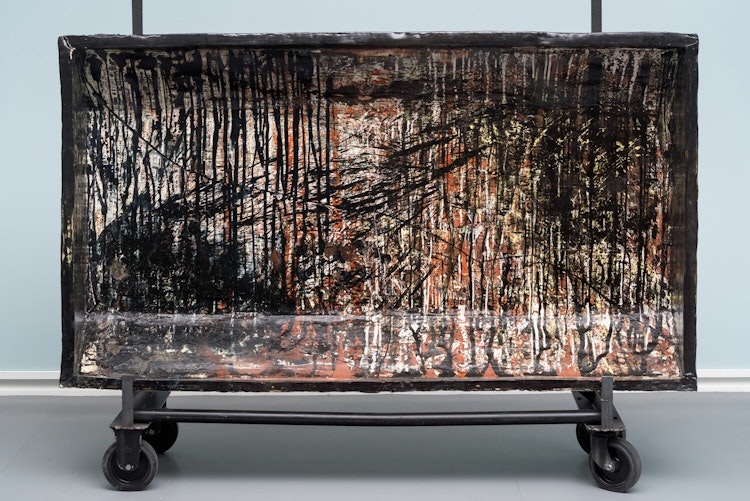
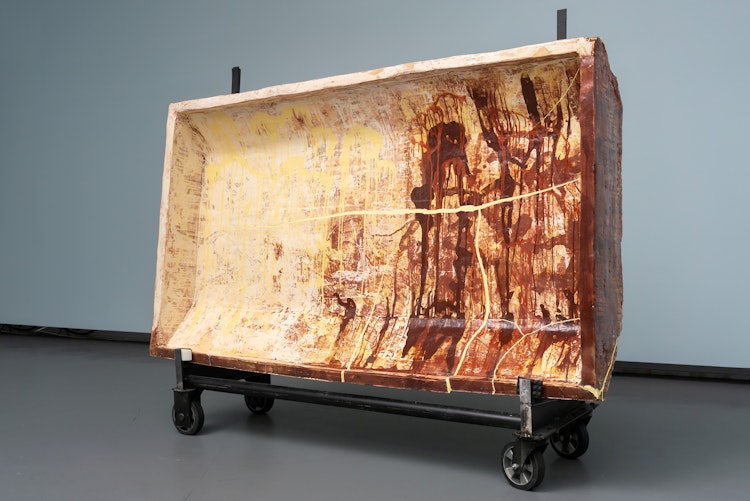
Inflexible fronts and a fresh start
Marit got involved in school politics, was elected to the student council and attended countless meetings about the situation in the ceramics department, yet without the students ever being satisfied. In June 1976, an extraordinary academic staff meeting was held to decide what should be done with the ceramics department. This was after the administration had received several crass letters from students, in which they asked that named teachers evaluate their positions. The students also demanded guest teachers.30
The situation became acute. ‘One cannot tolerate such domination by students’, the department head Rongved replied.31 He pointed out that the letters came from Marit’s class, well-prodded by the class above hers, and the same class had previously stated that it would not take the exam. Now the teachers responded by refusing to teach until the class withdrew its accusations.
‘The teachers surely tried to hold classes, but neither did we want the same strict structure as the Oslo school had. We were actually dissatisfied with everything – we must have seemed excessively demanding and horrid’, says Marit today, ‘but it must of course also have been a dream scenario for each and every teacher. Because we were so hungry to learn!’ 32 The problems continued throughout Marit’s final school year, with guest lectures by Yngvild Fagerheim and Kari Christensen (1938–1997) as two of the very few high points. Disillusioned and tired of school, Marit left at the end of the three-year study programme in the spring of 1977. But neither could Rongved put up with the situation any more. He applied for – and received – a year’s leave of absence, and never returned.
Torbjørn was also involved in school politics, albeit not one of the most zealous activists. Eventually he felt the demand to be involved and the demand for stalwart attendance at discussions and general meetings took too much time. ‘I was focused on working, practicing, learning. I had my own wheel in the workshop by the train station; a permanent place, and that’s where I spent my days.’ 33 He was tired and felt a lack of disciplinary certainty; he withdrew, became asocial and wanted to work in peace and quiet, away from exhausting discussions and messy fellow students. In the spring term when he was to create his exam project, he returned home to Venabygd, where the year before he had built a ceramics workshop with a wheel and a two-chamber oil-burning kiln in his grandfather’s carpentry workshop. Here the exam project was created, in isolation from the wider ceramics community, without professional guidance of any kind. But there was one area in which he was involved, and at its centre was a question: How could ceramics classes be organized when the head teacher was gone?
It is precisely here that the story takes a significant turn. For the protest in BKHS’s ceramics department was by no means unique. It was merely a local variation of an international phenomenon. But the consequences of what now happened were unprecedented. First, all the teachers in the ceramics department left along with Rongved, exhausted by years of dissatisfied students and controversies. The ceramics department was therefore entirely without teaching staff, and the rector has an enormous challenge dumped in his lap.
A call for applications to fill the teaching posts was immediately announced, but neither the teachers nor the students were satisfied with the list of applicants. And now something happened that would become the stuff of legend: instead of trying to solve the acute crisis by searching near the school to find new teachers, the rector let the students administer the funds for salaries and the teaching programme. At the same time, the school’s leaders gave the students the following mandate: ‘The ceramic department must come to agreement on the appointment of teachers which the school shall hire, and at the same time find the teachers.’34 The rector placed the responsibility in the hands of the students, and they eagerly accepted it! They looked directly to England; books and ceramics journals were scoured to find the foremost ceramicists, and through the international journal Ceramic Review, the school announced six-month temporary positions for ‘teaching and working’ in Bergen. For the students now wanted teachers who were actively practicing artists, teachers who could show rather than teach in a dry theoretical manner. And the students actually managed to lure several prominent ceramicists to the beleaguered school in Bergen: ‘Of course we applied! This was attractive, and a highly unusual job advertisement which we discussed in professional ceramics circles’, says the Englishman Richard Launder, who became affiliated with the school from 1982 onwards. He applied – but was not hired – when the job announcement was published in 1977.35
In the autumn of 1977, the first small contingent of new teachers came to Bergen: The Dane Finn Hansen (b. 1920) made glazes from natural materials and taught directly in the materials – not via chemical formulas; the Englishman Henry Hammond (1914–1989) worked in a refined Leach-tradition with exquisite brush décor, while John Maltby (b. 1936) made sculptural works directly with his huge hands, decorating them in a rough way with his special glaze, the dry ‘John Maltby’s yellow’.7 Takeshi Yasuda (b. 1943) from Japan spent several months at the school the following spring. He sat with the students gathered round him and made clay bodies on the wheel in a way that was new to everyone, without concern for norms about achieving perfection. The Norwegian Grethe Helland-Hansen Nash (1939–1999) introduced the students to raku firing. The ceramics department also took a study trip to England, and through Henry Hammond’s network, were able to meet ceramic artists who made a living from, lived for, and lived in harmony with their clay. Considered together, the guest teachers represented a wide-ranging and longed-for competence drawn from both the Leach tradition and the milieu opposed to it. This was because all the students who discussed the study programme agreed in taking a democratic approach, so that all the students would get ‘their own’ mentors in their search for competence. The result was like a renewing vitamin injection for Torbjørn and his class, but Marit had little direct benefit, since the guest teachers arrived after she left the school.
‘The experiences which the department gained from this were positive. As long as the department has purposeful leadership and a good programme with permanent teachers, there is no doubt that periods with guest teachers are very good’, summarized Rector Børresen in that year’s annual report.37 And it was precisely this type of ‘package solution’ he presented for the following year, in which his wife, the ceramic artist Eva Børresen (b. 1920), together with Gunnar Thorsen (b. 1948) (from the class one year ahead of Marit), and Harald Solberg (b. 1954) (from the same class as Torbjørn), were to ‘hold the fort’ while guest teachers came and went. A new era had begun in the ceramics department in Bergen.
The students wanted teachers who were actively practicing artists, teachers who could show rather than teach in a dry theoretical manner
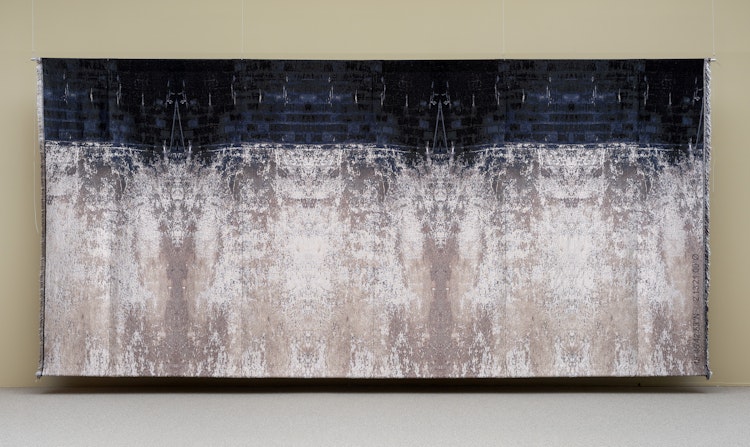
Experimental textiles and inverse pedagogy
Kari, who attended BKHS’s textile department, had quite a different experience. While the ceramics department experienced rupture between the students and teachers, the lines of division in the textile department cut between members of the teaching staff.38 The department was initially very technically oriented in the areas of textile printing, embroidery and weaving, and students were expected to develop technical expertise using these areas as starting points. But the department also had teachers who were professional artists, who exhibited extensively and were involved in the radical art milieu around the newly-established and artist-led Galleri 1, the educational institution Studieatelieret (Bergen Art Studio) and the studio cooperative Finnegårdskretsen.
In 1967 Elsebet Rahlff from Denmark, an artist who came to Bergen in connection with Gruppe 66, suggested to Rector Børresen that the school should offer a special training programme in textile printing.39 She was ready to teach it. When the school set up a textile printing workshop in 1955, it was conceived only as an inspiring form-related activity.40 Now the medium was developed into an independent artistic expression, not least through what Rahlff called ‘inverse pedagogy’: the students as a group unleashed their creativity on many metres of white fabric with everything they found that could create an imprint. The next step was to analyse what they had done and see what they could achieve through the diverse means they had used. Rahlff also utilized environmentally-friendly, reactive colour groups that did not require poisonous vats of dye, yet nevertheless resulted in purer and stronger colours.41
Rahlff, like her colleagues from Gruppe 66, was deeply involved in politics, and textile printing was well suited to respond quickly and directly to current events. As co-initiator of the artist-led Galleri 1, she also had the possibility to present experimental contemporary textiles to a larger public through the exhibitions Nordisk Eksperimentell Tekstil (1971, Nordic Experimental Textiles) and Samliv (1977, Living Together); these traveling exhibitions were reviewed extensively by the press and received much attention.42 Rahlff acted as a magnet, drawing the students into her cross-disciplinary exhibition projects. She was an inspiring force in the textile department. But while many students felt at home in the new textile printing, not everyone did. Kari wanted most of all to weave. She was unprepared for the craft discourse at the school, and the ‘art-politics-bit’ was not for her, even though there were probably expectations from some teachers that the students should get involved. ‘Ideas about contemporary craft, understood as an open field, were pushed on us via the teachers’, says Kari, yet she gladly sought out artists in the milieu around Galleri 1 outside school hours: ‘They of course functioned as our role models.’43
Not all the teachers felt at ease with all the new currents either. Sometimes factions emerged which certain students were drawn into. They resulted, among other things, in one of the teachers from the ‘old’ school being challenged to evaluate his position; he eventually did and quit. ‘Recent years have seen a lot of coming and going amongst the teaching staff in the department’, was Rector Børresen’s sober summary in the 1977 annual report.44 Although the textile department was marked by great differences of opinion amongst the professional staff, Kari experienced that the students had genuine academic choices: regardless of the directions they chose, they met a group of young, enthusiastic and highly competent teachers who were attentive and took them seriously. This was the opposite of what the ceramics students experienced.
The textile department had teachers who were professional artists, who exhibited extensively and were involved in the radical art milieu around the newly-established and artist-led Galleri 1


Education at BKHS in retrospect
‘Thinking back, I’ve realized I was fortunate to be accepted as a student in Bergen’,45
says Torbjørn Kvasbø today, about 40 years later: ‘It was a bit like winning the lottery.’46 He, Kari Dyrdal and Marit Tingleff all emphasize the school’s exciting, vital and cross-disciplinary environment as the most important aspect of their time at BKHS. Amongst their fellow students they found good friends and established important networks which they still today have good contact with and find useful; people who were, and are, concerned about the same issues, who share reference points with all those who occupied the same ‘bubble’ as themselves.
Marit and Torbjørn especially mention the ‘alternative teaching’ in the school’s backyard, where the ceramics students would try out things they had read about, seen or heard. They were curious, learned from each other, pushed each other – and competed: ‘Torbjørn was a virtuoso at the wheel’, says Marit, who saw herself as hopelessly clumsy.47 The teachers observed and gave them full freedom to experiment as they wanted. A superficial introduction was all they were given before the teachers thought they could operate the huge kilns on their own. Marit felt quite left to her own devices one night when she watched over the kiln by herself, and she thought the ensuing gas explosion was frightening, even though nothing too dangerous happened. ‘We taught ourselves how to learn things’, she says today: ‘The things we didn’t know we had to find out, and we had to find the way forward by ourselves.’48
This ability to explore and experiment, also the realization that there was so infinitely much to learn and that no one could do your learning for you, would come in handy after she left school and needed to find out who the ceramic artist Tingleff was. It took ten years: she sat in the workshop she had taken over from her brother, made ordinary cups and platters that no one was interested in, and was not invited to participate in any exhibitions. She had to learn how to excel as a ceramic artist. She remembered some advice from BKHS’s drawing teacher Eilif Amundsen (1930–2007): ‘But Marit, you must accept the [drawn] line that you have, otherwise you’ll get nowhere!'49 Amundsen wanted to teach her to see and to find her own strengths. She eventually realized she actually was not all that interested in the hard stoneware and all the glaze experiments from the school’s backyard. Instead, she found her way back to soft earthenware and the colours she had come to know whilst an apprentice: she began painting and erasing, exploiting the ‘clumsiness’ she had fretted over as a student, and finally developed her own artistic language. And to this day she regularly holds imaginary discussions with Amundsen when things get difficult. It works.
Kari also mentions the drawing teacher Amundsen as an important mentor. She struggled to infuse energy and vitality into her report patterns as well as the slow weaving process, and she probably felt a bit distant from everything happening around her. Amundsen sympathized with the political involvement in the milieu but was not himself active in it. He believed one should use the place one was at as the starting point, and to develop it. For Kari, this was a matter of having confidence in weaving, of sticking to it, and of believing she could find her expression in weaving. She loved weaving and had great patience when doing all the painstaking and detailed tasks which weaving required, but she was impatient to progress in her specialised field: ‘I was so confused about what being an artist meant.’50 At school she and the others were taught many technical skills, to make and to understand how materials could be used. But it was difficult to make good things.
Neither was Torbjørn’s professional self-confidence particularly high: ‘We were an ambitious group, and the demands we made on ourselves were sky-high. Our self-image was tied to achieving what we wanted. Sometimes I was so desperate that I cried and got stomach aches. Everything was so vulnerable and fragile – were we clever enough? (…) I worked a lot to build expertise in order to maintain my positive attitude and self-confidence.’51 Long after graduation, he experienced that the huge lacunas in his education made him unsure of his own knowledge and discernment.


Carry on, hold out and stick together
In retrospect, Torbjørn sees that the bad experience of lacking basic knowledge – also the realization that much of what they had learned was simply wrong and had to be ‘unlearned’ – contributed to his desire to become a professor himself.52
Wanting to give students what he himself had not received, he developed detailed plans for an entire study programme, with clear progression and clear learning goals; that is to say: correct knowledge at the appropriate time, and to give the students the feeling of mastering things along the way. He was also intent on developing a type of student democracy in which students and teachers discuss and make joint decisions about possible changes in the study programme.
Torbjørn also emphasizes teaching as part of his artistic project. For several decades he was involved in ceramics study programmes at various higher-level schools in Scandinavia, as a teacher and examiner, on institute boards and committees, and he observed developments in the field which he disliked: ‘I knew I had to be the leader in order to change anything’,53 he says today. He also divulges a certain self-interest in becoming a teacher: if he could develop as a ceramic artist, someone in the future must surely have an interest in, and competence enough, to understand and appreciate what he is doing.
When Marit applied for a professorship at Kunsthøgskolen i Oslo (KHiO, Oslo National Academy of the Arts) in 2013, her motivation was similar: for an extended period not much attention had been devoted to clay at the school, and there was, she says, ‘frustratingly little interest in, and knowledge of, ceramics amongst the students’.54 She wanted to turn the teaching in the ceramics department towards clay, and in retrospect sees that it took time. As a ceramics professor, it was also important for Marit to give the students plenty of basic knowledge about the material, but such knowledge is still insufficient in her eyes: if you’re going to change the discipline artistically, you must go deeper into the field than that. She recognizes that the new system whereby students organize their own course progression is challenging in this respect. It becomes so easy for them to lose the ability to keep going and hold out when faced with difficulties.
Marit tried to pass on to the students her own enthusiasm for pushing the clay material beyond what seems physically and technically possible. Her strategy for doing this was to initiate her own artistic project right before the eyes of everyone at the school: a project bordering on the impossible, and without a secure outcome – thus drawing students into the excitement of the uncertain. ‘I was probably strict as a professor’, says Marit, ‘it was important for me to give the students who specialized in ceramics an insight into the field which would be inaccessible to those who just came from other departments in KHiO, who just wanted to try things out a bit. In ceramics, slowness and endurance are absolutely necessary.’55
Also Kari, the only one of the three who is still a professor, is eager to equip students with basic knowledge. At the same time, she is concerned about how this ‘tool chest’ can be used to transform an idea into a finished project. As an advisor, she asks her students: ‘Is this a place you want to be, and have you achieved what you wanted?’56 For Kari, these are fundamental questions, not only during the study programme but also after it is completed: if you are going to endure as an artist, you must find the mechanisms that make you care deeply about your art, which incite you to explore, challenge and surprise yourself (not least).
Like Marit, Kari believes students must tolerate being in the difficult questioning phase. They must tolerate qualified resistance, and must realize where their strengths are. Here she quotes the Canadian artist Agnes Martin (1912–2004): ‘When nothing happens, you must focus, for that is when everything can happen.’57 Kari gladly refers to her own experience and thinks it is crucial to share with the students what it is like to stick to an artistic project regardless of experiencing ease or adversity. Reflecting on her student days, she also remembers how important it was to have good role models in the textile field, to have the opportunity to meet active textile artists who showed, in practice, what it meant to create starting from an artistic idea. She therefore initiates annual seminars on the theme of textile identity, inviting artists from a wide range of fields, hoping that through such encounters, the students, individually, can find their role models and ‘link up’.
Having teachers who are practicing artists is a valuable and necessary additional competency at an art college or academy, says Kari. It can help link the basic making-related knowledge to contemporary art. But teaching also functions as a whetstone for her own art: ‘The students remember everything you say’, says Kari, ‘so I must express myself carefully and precisely.’58 What is said must be thoroughly thought through. But then she also uses her advisor’s role from the educational context on herself and her own art, when, during the work process, she asks herself: ‘And what have you thought to do now, Kari?’
Marit, who withdrew from teaching after one fixed term, found that getting out of the studio and into a new and large ceramics fellowship was magical and educational, but also exhausting: ‘I was forced to have opinions about everything!’59 She remembered the pulsating tempo from her time as a student, also the joy of being able to come up with good solutions through discussions with others. Similarly, Torbjørn points out how teaching gave him energy. As a professor he mostly advised students individually, and with enthusiastic students, it was like having challenging conversations about your own work: as a teacher, you must use your entire repertoire in order to give something to the students, but you also receive a lot in return.
Part of this repertoire has been to show the importance of interdisciplinary collaboration, to pull the students out of the school’s technical workshops and get them to attend conferences, events and specialist workshops; to offer them access to his own professional network, and to impress upon them how important it is to build their own networks. In this way, the students can prepare themselves for life after school.
An inheritance, for good or ill
As stated introductorily, this article has centred on how time spent at BKHS could have influenced the careers of Kari Dyrdal, Marit Tingleff and Torbjørn Kvasbø during the past 40 years. In the course of these four decades, most probably a great many other things happened which have affected the professional choices they made along the way, but which have receded into the background of this story. Nevertheless, this does not change the fact that a disciplinary foundation was laid a long time ago, and they find it impossible to be ambivalent about it. In part, they found the role models and professional ideals which they have kept as ‘guiding lights’ for their own artistic activity. In part, they encountered insufficiencies and friction which were surely difficult to cope with there and then, but which also stimulated them to greater awareness, independence, and to take responsibility for their own professional development.
And, not least, they met each other at that time in Bergen over 40 years ago, and became part of the important network which all three emphasize as the very backbone of being able to develop as professional artists.